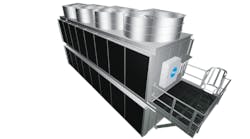Safety, it’s said, is its own reward. True enough, but without proactive efforts to identify good safety practices and to recognize successful accomplishments in achieving and maintaining safety in the workplace, there is little to encourage or instruct executives, managers, and operators to improve the safety standards and practices where they work.
Safety, it’s also said, is everyone’s concern. That’s also true, but not all safety programs are equal.
Each year the Forging Industry Assn. surveys its producer member companies in order to identify the operations where the safety programs have performed best or improved the most. The FIA’s annual Safety Awards are presented to forging companies in each of four groups, according to average annual employment. Group I includes companies with up to 80 employees, Group II includes companies with 81 to 175 employees, Group III represents companies with 176 to 325 employees, and Group IV includes companies with more 326 employees and more.
First-, second-, and third-place Safety Award plaques are given in each group for companies having the lowest Recordable Cases Incidence Rate, provided that the DART (Days Away from work, work Restrictions, or job Transfer cases) Incidence Rate falls below the group average. In the event that Recordable Incidence Rates are equal, the committee uses the lower DART Incidence Rate to determine the award.
Improvement Awards are given in each group for the company that demonstrated the greatest decrease in the DART Incidence Rate. This award is determined by the percentage of improvement by DART Incidence Rate compared with the average of the last three years.
A certificate of recognition is awarded to each company that does not earn a first-, second-, or third-place rank, and where the Recordable Incidence Rate falls below the group average — provided that the DART Incidence Rate also falls below the group average.
The information for the competition is gathered from questionnaires mailed annually to all FIA producer members. Producer members provide the data recorded on OSHA Form No. 300, “Summary of Occupational Injuries/ Illnesses for Calendar Year” for U.S. companies, and from Worker’s Compensation Reports for Canadian companies on the questionnaires. Completed returns provide the basis not only for the Annual Safety and Health Awards, but also for FIA’s Annual Occupational Injury & Illness Report.
Two rates are computed for each participant: DART Incidence Rate, and Frequency Rate. The published report provides a summary for the total industry and detailed company rankings, according to the Incidence Rate by size groups. Each participant will fall within one of four size categories, according to four groups based on average annual employment. The number of employees is based on the entire forging operation for the company, plant, or division being reported, including executive, administrative, clerical, sales, maintenance, and production.
To collect some insight to the strategies behind successful safety programs in forging operations, we approached all of 2011’s first-ranking award winners with some questions about their experience, their observations, and their challenges.
King Forge and Machine
King Forge and Machine Company, Twinsburg, OH, is one of four first-place honorees among the small forgers in the first group. Director of manufacturing Paul Omilion noted that the forging operation has fewer than 10 employees, but as a captive supplier to SSB Corp., a manufacturer of elbows, T’s, and valve bodies for the parent company’s line of fluid system components, it operates two mechanical forging presses (1,300 tons and 1,600 tons) in which it forms 316 stainless, other nickel-based specialty alloys, and some carbon and brass products.
The King Forge and Machine safety record is impressive: over 1,400 days without a lost-time injury, and “zero recordables,” Omilion said. The results apply across the King Forge/SSB installation.
“We place a strong emphasis on employee training,” Omilion said. The organization has been a Lean/Six Sigma site for nine years, he explained, which has led to numerous initiatives to improve production processes and standards in support of plant safety. Among these he listed better process organization, new lighting, updated control systems, and extensive education and training.
“We looked at our record, what types of injuries were most common, and we noticed a lot of hand injuries,” he recalled, listing cuts and crushed fingers resulting from operators working with machining and metal cutting centers. “Another common problem was back injuries,” he said.
“We addressed the back injuries and hand injuries directly by looking for root causes, doing some studies throughout the departments, including the forge shop, and we started to identify how most of these injuries happened. Some of them were just minor injuries but there were also some that were recordable, and in the early days there were actually some lost-time accidents.”
An employee education program followed, and a “hand safety policy” was developed, outlining requirements to be followed for certain tasks at particular work centers. Workers must wear gloves to handle bar stock, for example, and they must use prescribed tools to clear chips out of the machine tool cutting zone.
Fasteners presented another set of causes. “We implemented a preventative maintenance process to replace certain fasteners on machines and presses that are used on a constant basis,” Omilion said. “So, as they change dies or change tools numerous times each day, the operators now will check the fasteners with wrenches, because we noticed that a lot of injuries were happening as they tried to tighten or loosen a bolt – and their hands would slip.”
Back injuries were another area of improvement. “We implemented set-ups and installed lift tables that ensure the operators don’t have to bend down,” he said, “and we educate them on proper lifting techniques, using legs rather than bending over, … We have invested in a lot of ergonomic tools to minimize the number of back injuries we have in the plant.”
All these efforts have paid off in terms of cost savings, Omilion said. As for the future, the primary goal is to maintain the current safety record and to continue educating new workers to observe the safe practices. SSB Corp. has hired almost 40 new associates for its machining operation in the past 12 months, he estimated.
Solmet Technologies Inc.
Another FIA award winner in the small-plant category is Solmet Technologies, an open-die hammer shop in Canton, OH. It produces spindles and shafts from 3 to 16 in. diameter, in lengths up to 180 in., and weighing up to 3,000 lb.
“As part our ISO 9001:2008 quality objectives, we strive for 100% workplace safety,” Solmet Technologies president Joe Halter said. “To assure we achieve this objective, Solmet has an extensive new employee-safety orientation checklist that includes general safety rules and policies, a safety board, and manuals. The plant also prioritizes hazard communication and chemical safety procedures (MSDS); hearing conservation; control of blood borne pathogens; an electrical safety and lockout/tagout program; emergency planning/routes and assembly locations; procedures for safety violations, accidents, and near-misses; proper lifting and ergonomic techniques; tool and equipment safety; safety signs (with explanations); housekeeping to prevent slips, trips and fall hazards; material handling safety standards, including fork truck operation and crane safety; and fire extinguisher location awareness and usage training.
“Safety training continues daily through proper supervision, training videos, break room slideshows, and various testing,” Halter explained.
The plant’s recent safety developments have included adding more safety video training and manuals, adding and improving plant signage, and repainting safety guards and machinery. New lockers and informational bulletin boards have been installed, too. Next month Solmet will continue its external safety-training program arranged through the Ohio Bureau of Workers Compensation.
“We are very fortunate that most our employees have been perfecting their trade for over 20 years,” Halter reported, and some for over 25 years. This experience, combined with a family-oriented environment has everyone looking out for the safety of each other, to create a quality product.”
Forged Products Inc.
FIA’s top safety-performance among companies with 81 to 175 employees is Forged Products Inc., in Houston. FPI is an open-die, closed-die, and extrusion forging operation producing carbon, alloy, and stainless forgings for oil-and-gas, power-generation, heavy equipment, and general industrial markets. It operates two hydraulic forging presses and makes forgings various shapes, in weights up to 25 tons.
CEO Kevin Crowley said FPI has a comprehensive safety program with high involvement from all levels of the organization. Some of the important elements of the safety-management process he identified are FPI’s joint management-employee safety committee; daily start-of-shift ‘toolbox talks’; monthly department meetings; monthly walk-through inspections; a safety observation program; and an annual, voluntary OSHA compliance audit. “All of these safety management activities are coordinated by a Safety Steering Committee led by the FPI’s President,” Crowley told us.
The forger involves all of its hourly, supervisory, and management personnel in a “Safety Observation” program that results in at least 60 safety observations per week. Crowley said employees feel free to conduct these observations without fear of discipline, and the trends that result from these observations are monitored closely by the Steering Committee. “Shop-floor employee involvement is the key to success,” he emphasized.
Avoiding complacency is a big challenge, he observed. Similarly, maintaining a high level of safety awareness and keeping employees up to date with new regulations and requirements are critical points of emphasis.
“Our objective is to eliminate all injuries,” Crowley said, matter-of-factly, “and our next major step is to make our application for participation in OSHA’s Voluntary Protection Program (VPP).”
Scot Forge Co., Clinton Div.
Scot Forge has three wholly owned plants located in Northern Illinois and Southern Wisconsin, and the Clinton, WI, operation placed first among FIA’s plants with 176 to 325 employees. The company also operates two joint-venture operations. “With our combination of open-die presses, ring rollers, and full complement of value-added heat treatment, machining, fabrication, and testing, we supply custom forgings ranging from 5 to 80,000 lb. to multiple industries including mining, oil and gas, power generation, aerospace, and many others,” president and CEO John Cain explained.
The Scot Forge safety program is based on a combination of proactive tools to improve safety performance, he said. A behavior-based observation process is combined with a layered process audit (LPA) procedure, along with an awareness-building program, SafeStart, to minimize injuries. “All levels of the organization are involved in using these tools to improve our performance,” Cain emphasized.
“The biggest addition to our safety efforts (over the past year) has been the development of more than 130 safety-related, layered process audits that personnel at all levels of the organization conduct,” he recalled. He added that more than 100 Scot Forge employees were trained in Modules 1 to 5 of the SafeStart program that builds safety awareness.
“The biggest challenges are to move recognition of hazards from reactive to proactive, the executive observed, “and to replace habits that put employees in at-risk situations with better/safer habits. We have gotten very good at performing incident investigations to determine root causes. We are working hard to translate that skill into being able to recognize potential problems before starting the task, and to minimize those problems before they cause an injury, equipment damage, or damage to a part.”
The next step for Scot Forge’s safety achievements will be to conduct more company-wide training that will improve habits that will reduce workplace injuries and “self-triggering” of hazards. Cain expects this will continue to reduce workers’ injuries and “further improve our injury reduction efforts. Our observation and LPA processes will be monitored closely to identify any areas or issues that need closer attention to prevent an injury from occurring,” he said.











